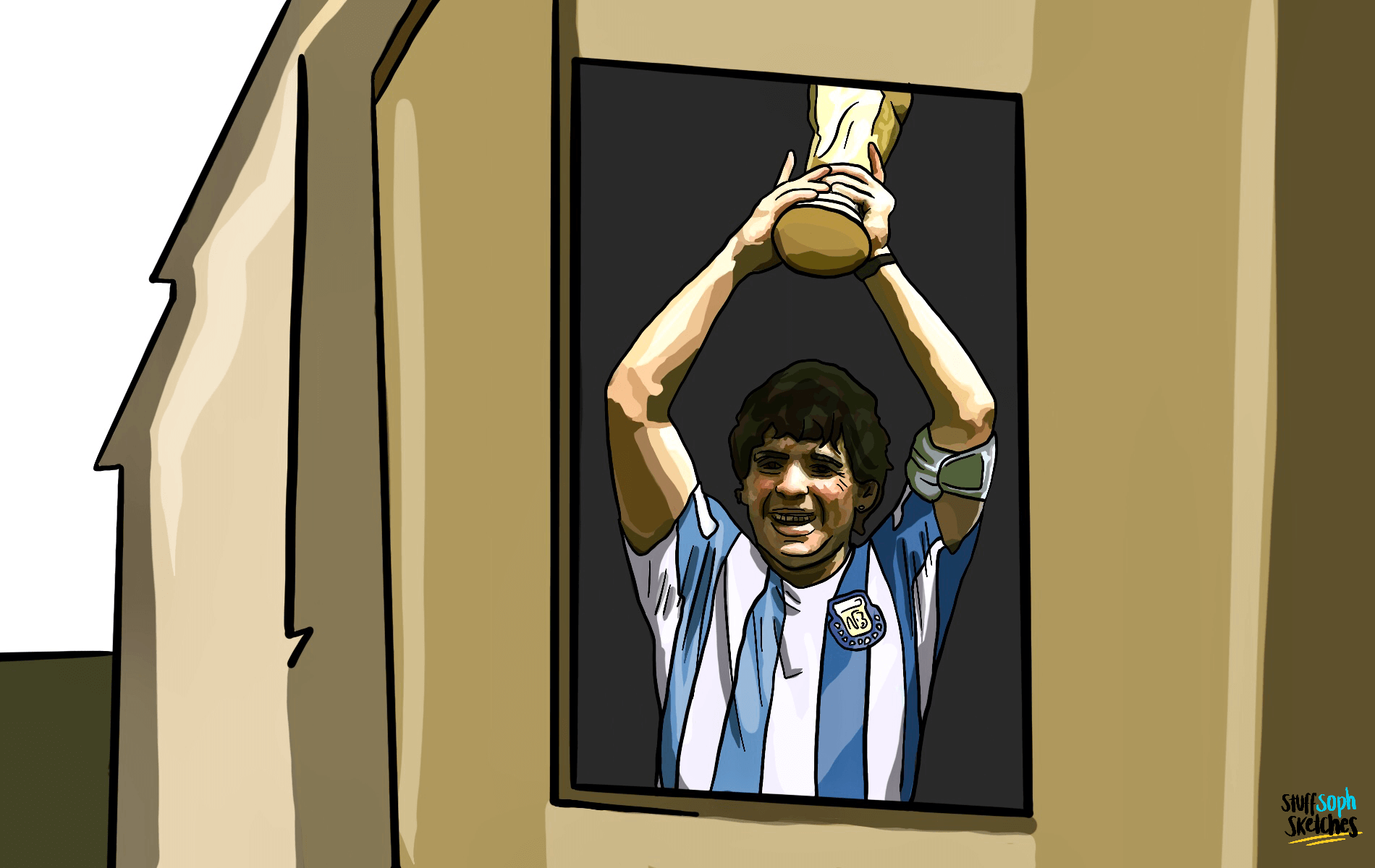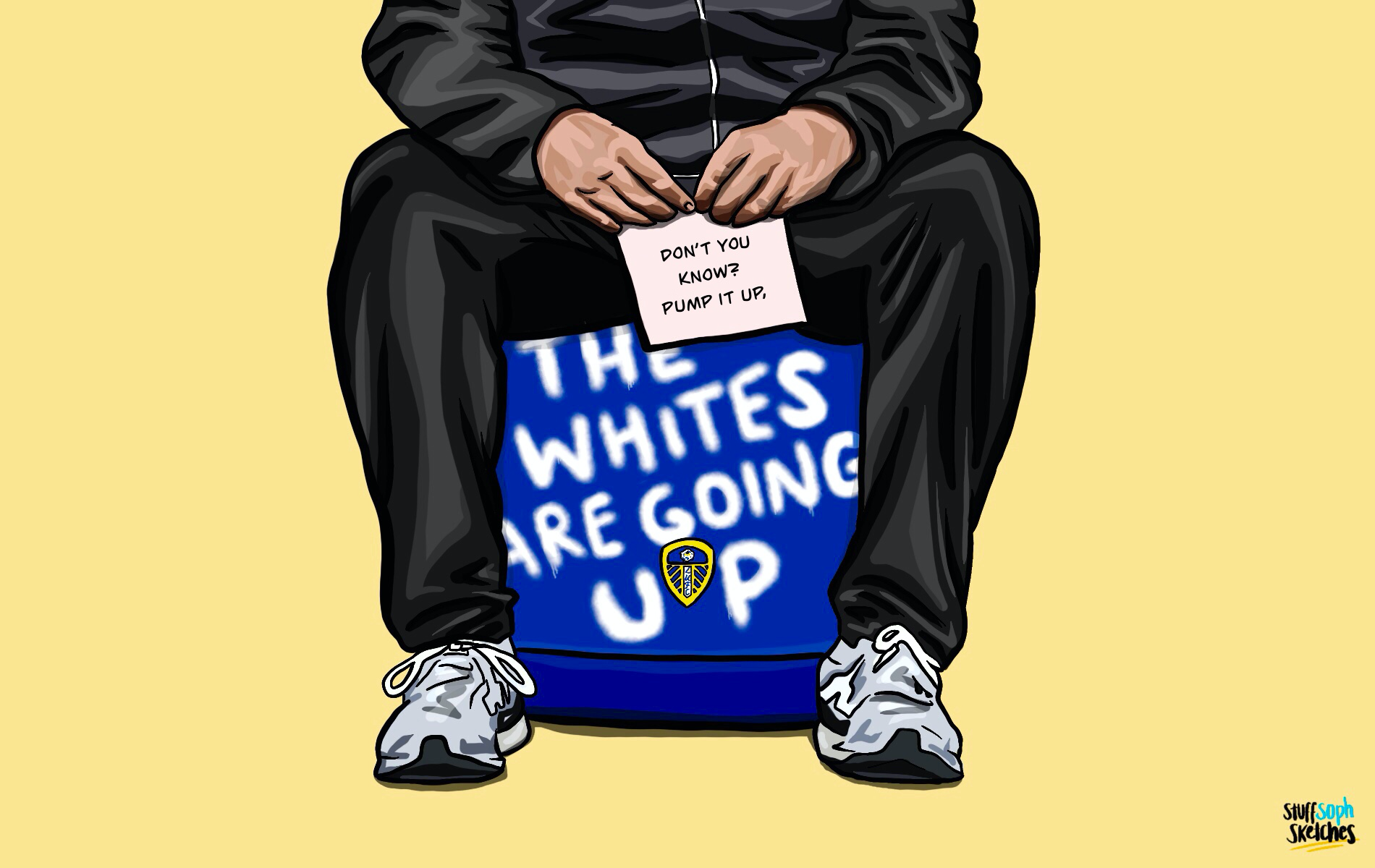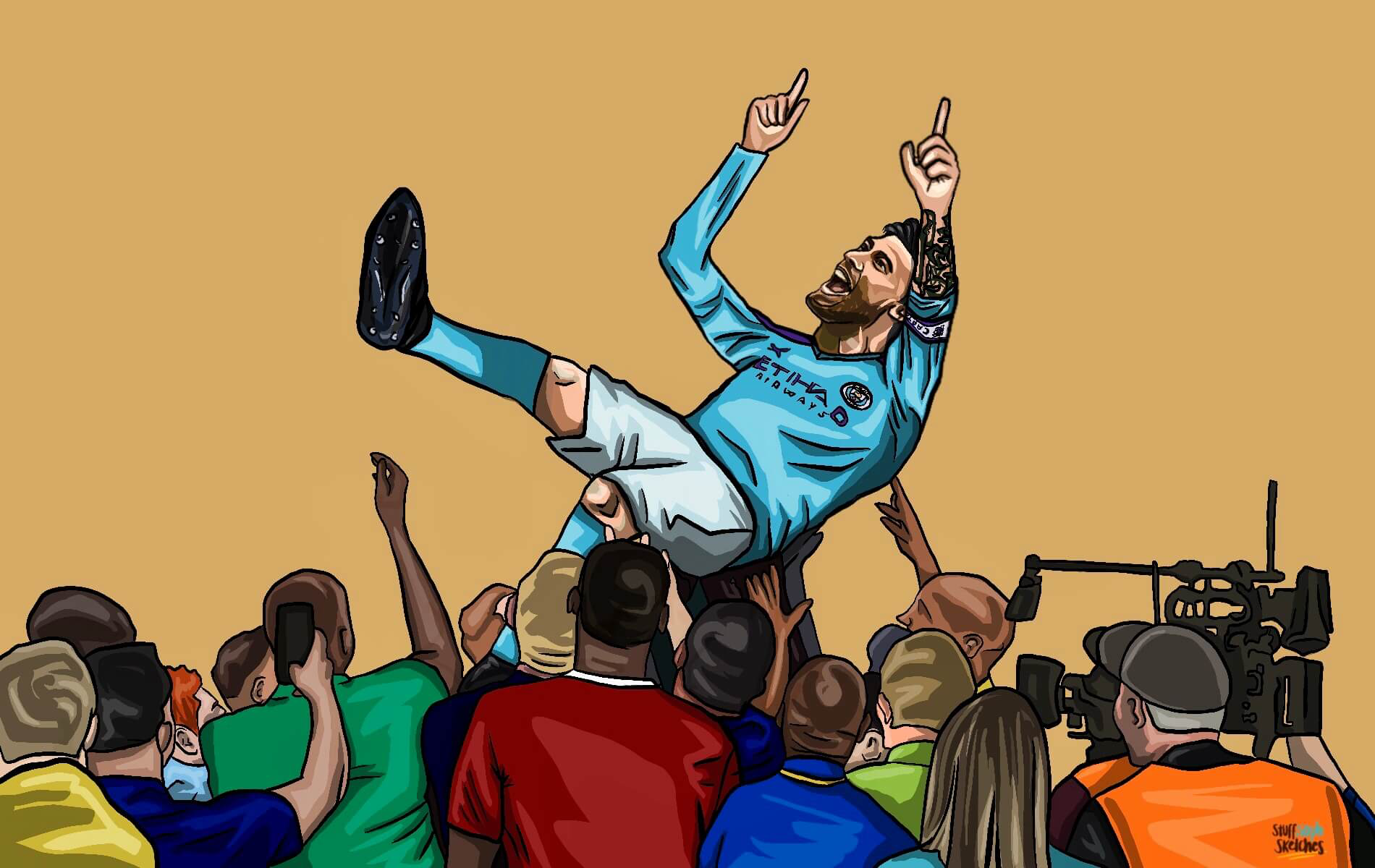When the buzzing of my phone alerted me to the news that Diego Maradona had passed away, I did what I imagine most of the football family did almost instinctively. I turned to social media to gorge myself on headache-inducing, over-saturated footage of a true genius at work.
The membrane separating his unpredictable creative genius from a violent undercurrent of self-destruction, and madness at times, disintegrated with all the resistance of a champagne-soaked roll-up.
With a shock of tumbling black hair, the young Maradona bears a startling likeness to some diabolical bust of Alexander the Great come to life, tearing past the opposition with the characteristic muscular grace which marked him as a talent capable of bending the arc of an entire sport. Beneath a passing superficial likeness lie others. Like the Macedonian conqueror before him, the Argentine’s diminutive stature stood in stark juxtaposition with a capacity for almost superhuman leadership and the sheer audacity of his achievements. Both lives bore an almost palpable touch of mythology; emerging far from the centre of their respective homelands only later to compel the respect, attention and admiration of the worlds they changed through the undeniable force of their monumental charisma. They were equally defined by intensely human imperfections of equal magnitude. The philosopher Aristotle, Alexander the Great’s tutor for a time, wrote of hamartia – the inextricable bond between the tragic hero’s sublime powers and his fundamental, often fatal, personal flaws. Now, in the wake of decades of controversy, it is a worn cliché to draw attention to the shocking duality of Maradona’s life, but it is simply impossible to ignore. The membrane separating his unpredictable creative genius from a violent undercurrent of self-destruction, and madness at times, disintegrated with all the resistance of a champagne-soaked roll-up. In the words of his long-term trainer Fernando Signorini: ‘There was Diego and then there was Maradona’. In fact, the defining essence of Maradona’s life can be found in the disorienting way in which his sublime triumphs dramatically, often simultaneously, collided with the most human, and therefore humanising, aspects of his character.
As the embodiment of the archetypal Argentinian pibe (street urchin), equipped with the smarts and know-how to deceive and connive his way to victory against seemingly more powerful opponents, Maradona’s position at the beating heart of Argentine football was secured in his earliest days at Boca Juniors. His humble origins of the impoverished Villa Fiorito neighbourhood of Buenos Aires marked him as a child of poverty, typical in a nation built on the back of decades of waves of immigration and shockingly unequal distribution of wealth. His squat stature, itself an inheritance of a mixed Italian-indigenous heritage, and pugnacious resilience on the pitch adding to the ease with which he was identified as the animated spirit of las cabecitas negras; the downtrodden underclass of Argentinean society. According to Jonathan Wilson, a man hardly known for melodramatic overstatement, the young Diego was nothing less than the ‘fulfilment of [a] prophesy’. However, despite the ease with which he was absorbed into the national psyche, Maradona’s transformation from man into myth only truly came to pass during the seven tumultuous years in which he became the saviour of SSC Napoli.
After a disastrous stint at Barcelona, marred by injury, illness and a mass brawl at Bilbao, his arrival at a club threatened by relegation in one of the poorest cities in Western Europe was unlikely. Neapolitans at the time were the victims of outrageous prejudice and discrimination from their northern compatriots. Systemic neglect from central government since the time of the Risorgimento, endemic local corruption and the ever-pervasive, nefarious influence of organised crime had conspired to trap the city in a cycle of deprivation, unemployment and perpetual exclusion from the wider Italian state. While the industrial, metropolitan north continued to draw the lion’s share of any economic progress experienced on the peninsula, the south was left to fend for itself. Banners hung at the Sao Paolo during this era regularly commanded the faithful to lavetevi (wash yourselves) and vicious chants begging for the destructive powers of Mount Vesuvius to be again unleashed on the city were commonplace. Naples was a ‘sewer’, a drain on the resources of the productive north and, therefore, deserved nothing more than the odium of all Italians. Neapolitans were less Italian than the rest, uncultured, lazy and, at worst, no more than le scimmie (monkeys). This context is essential for understanding both why Maradona packed his bags for Naples in the summer of 1984 and why he is still so widely revered in the city. In his own words ‘The Neapolitans were the Africans of Italy. I felt as though I represented a part of Italy which counted for nothing’. Certainly, there is a sense of indignant communalism about the footage, achievements and myth of Maradona’s Napoli years. Naples was a city defined by what it wasn’t and, according to most well-heeled and connected Italians of that era, never could be. Their reaction was often to turn inwards, to fiercely held local traditions, saints and rituals which insulated many from the disdain of their compatriots and in many ways continues to give the city its unique character to this day. More than anything else it was the football club that served as the focal point for Neapolitan dreams of reparation and revival. While the super-clubs of Milan and Turin boasted players of European footballing royalty, it was Maradona alone who bore an entire city’s hopes and dreams for much of the decade. After two years of middling success, as he adapted to the punishing reality of playing in the defensive and physical style of catenaccio era Serie A, the Maradona and Napoli love story entered into its most productive period. Between 1986-90, Serie A was turned upside down as Napoli battled their way to two Scudetti and the UEFA Cup of 1988-89, successfully breaking the monopoly of the northern clubs, if only for a short, heady while. The sheer implausibility of these achievements is most memorably illustrated by an Azzurri banner which appeared outside a cemetery in the city during the riotous celebrations of the club’s first title win; ‘E non sanno che se so’ perso’ (They don’t know what they’re missing).
If it was in Naples that Maradona completed his ascendancy toward deification as the saviour of downtrodden and oppressed Neapolitan masses, it was also where the man paid the heaviest price for becoming a myth. Simply walking around the streets of the Quartieri Spagnoli or Forcella neighbourhoods reveals the extent to which the Argentine has been adopted into the city’s panoply of saints and local heroes. Whether it is a thirty-foot mural plastered across the side of an apartment block or a small, weathered photograph ensconced in one of ubiquitous street-side alcoves more commonly dedicated to Santa Maria, Maradona’s legacy lives on in many inhabitants’ daily lives. It is unavoidable and, to the locals, unremarkable. In many ways you can be forgiven for thinking the locals have simply transplanted San Gennaro, the traditional patron saint of the city, for San Diego. Yet, it is in these very same neighbourhoods where Maradona’s biggest crises were incubated, and his most deadly flaws nurtured. Throughout the 1980s, Naples, and the wider Campania region, was divided between competing Camorra clans, taking advantage of profoundly compromised local law authorities to oversee a boom in the drugs trade in the city. Maradona, always the object of interest from the powerful and influential wherever he went, quickly became adopted by senior members of the Giuliano Clan, a vicious Camorra organisation which controlled much of the city centre. In exchange for protection, both political and physical, and easy access to a supply of drugs to support his worsening addiction, he quickly succumbed to the role of mascot to the camorristi, who in their ongoing conflict with the larger Nuova Camorra Organizzata saw an opportunity to align themselves with their city’s idol. If he lovingly adopted into the hearts of the wider Neapolitan population Maradona was more cynically exploited by the city’s seedy, often deadly, underbelly. Upon losing his political protection after scoring a penalty to knock Italy out of the World Cup of 1990 (in front of the curva at the Sao Paolo no less), photos of Maradona in the garish Giuliano apartments would appear in papers across the country. Failed drugs tests and high-profile court cases signalled the beginning of a brutal end of his time in Italy – the adopted land where he had simultaneously become both the saviour and the devil.
Today, while Napoli find themselves as established contenders at the top of Serie A, the Stadio San Paolo remains almost untouched since their saviour’s departure, a monumental crumbling relic overlooking the city. This stagnation is almost certainly the result of nothing more than the reality of ongoing financial issues experienced across the south of Italy, a country still divided along old fault lines. But, just maybe, it is attributable to a fear of disturbing the hallowed turf on which the Neapolitan faithful once witnessed their dreams finally take the form of a small, scruffy fighter who became a God.



